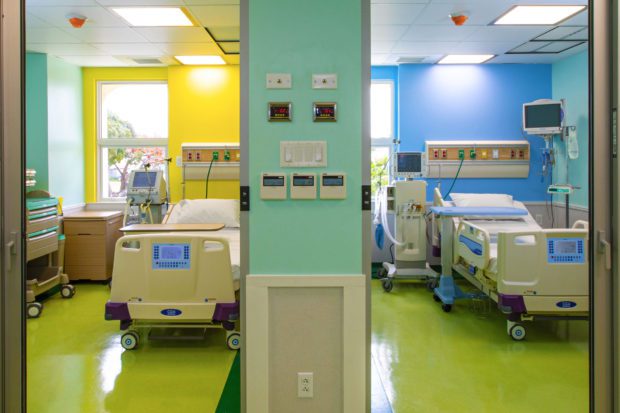
Almost two years after the Covid-19 pandemic started, 270 million people have been infected with the virus and 5.3 million have died worldwide. Cases in the United States exceed 50 million, while more than 800,000 Americans have lost their lives. As the planet grapples with the deadly Delta variant, new challenges appear with the arrival of Omicron, an even more contagious strain for which the level of protection that vaccines provide is still unknown.
Experts convened by Ethnic Media Services insist that the only way out of this pandemic is vaccination with boosters, the use of masks and permanent testing. They view with concern the collapse of the health system and the lack of vaccine equity.
“Our healthcare system has been stretched to the breaking point several times during this pandemic and is poorly equipped to deal with this wave,” said Dr. Tung Nguyen, professor of medicine at UC San Francisco.
“Many of my colleagues are leaving the healthcare system and those who are staying are burned out and depressed. This matters to all of us.”
The Omicron wave has caused 120,000 cases a day, an increase of 40% compared with the last two weeks, and 68,000 hospitalizations, 21% more than in the last 15 days. The projection is 200,000 cases a day in the coming months. Before the appearance of this variant originated in South Africa, the risk of contracting Covid among the unvaccinated was five times higher than among those who are fully vaccinated, and the risk of death was 13 times higher.
Although to date 61% of the population is fully vaccinated, “the bad news is the effectiveness of the two doses of the Moderna or Pfizer vaccines is significantly reduced against the Omicron variant…so now we have to assess the rate of boosters,” Nguyen said.
Only 31% of people aged 18 and older have received a booster, whereas that rate is 53% for people older than 65.
Twenty-three percent of Covid cases in the United States have occurred in people under the age of 18, although hospitalizations and deaths among this population are rare, said Roshni Mathew, co-medical director of infection prevention and control at Stanford Children’s Health. Only about 1% of the seven million pediatric Covid cases have required hospitalizations, and around 660 pediatric patients have died from the coronavirus.
“Having seen what Covid often can do in children (the so-called multisystemic inflammatory syndrome in children, or MISC), I do think that not vaccinating is a risk not worth taking,” Mathew added.
According to Dr. Ben Neuman, chief virologist at the Global Health Research Complex at Texas A&M University, scientists are tracking four sub-lineages of the Omicron variant that appear to grow at a higher rate than the Delta variant.
Neuman said that while we might not need a booster for each variant, Omicron “sticks to the cell differently” so it would be wise to have additional protection. “Don’t underestimate Omicron,” he added.
And he recommended caution with the term “fully vaccinated” because “no scientist can tell you how many doses are going to provide lifelong immunity, and that can give a false sense of security.”
Dr. Dali Fan, Davis Health Science clinical professor at the University of California, said that challenges with the unvaccinated persist. “Human nature is that we’re looking for certainty and safety, but unfortunately the vaccination science does not give you 100% certainty. That opens a lot of doors for misinformation.”
Fan recognizes the many myths and lies on social media that feed the fear of the vaccine. But there are also answers that the scientific community still doesn’t have.
“What are the consequences of vaccination in 20 years? We don’t know. So we have to listen (to people’s concerns). Sometimes arguing with them is counterproductive,” he observed.
Globally it is estimated that more than 50% of the population have received at least one dose of the vaccine, but in some third world places such as Sub-Saharan Africa, this figure is still in the single digits.
“It is the result of a regime that I consider to be vaccine apartheid,” said Peter Maybarduk, director of Public Citizens’ Access to Medicines group.
“It is a perfect purposeful systemic inequity, not only of doses but also of consumables and raw materials by the wealthy and more powerful countries that had slowed global production (of vaccines), and of course, a refusal to share technology.”
Although COVAX, the World Health Organization’s global vaccine equity initiative, had a goal of delivering 2 billion doses to low- and middle-income countries by the end of 2021, that number will barely reach 800,000 doses.
“Poor countries are more likely to receive poor vaccines, something that is going to have serious consequences as we get deeper into the pandemic,” Maybarduk said.
“This underscores the need to equip adaptable capabilities globally that can put out large-scale vaccine manufacturing that can be adapted to variants more quickly.”
*****
